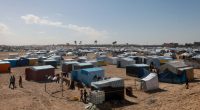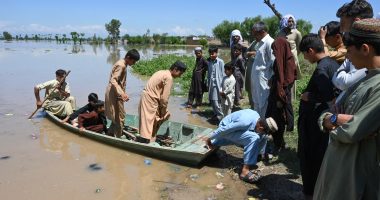
Over the past 10 years, a growing number of Vietnamese people have been migrating to Europe with hopes of a better life. This has taken place largely under the radar, but in 2019 the horrific Essex 39 tragedy in the United Kingdom, where 39 Vietnamese bodies were found in the back of a lorry, drew global attention to the trend. Since then, reporters have exposed several smuggling networks which facilitate irregular border crossings – from the Netherlands to Malta – with the UK often seen as the target destination. In fact, the UK’s Home Office has reported a ten-fold increase in Vietnamese nationals arriving in small boats in 2024 so far.
The majority of recent Vietnamese migrants to Europe hail from a handful of provinces in North and North Central Vietnam. Despite widespread knowledge of the dangers involved in crossing the English Channel and risks of exploitative working conditions in nail salons or cannabis farms, many young people have come to believe that leaving their homeland behind, where they see no future, is the only way to secure one.
But what impact does transnational migration have on the left-behind communities? Let’s take a look at Nghe An, the province which the majority of Essex 39 victims hailed from.
Nghe An has a proud nationalist history. Vietnam’s legendary independence hero, Ho Chí Minh, was born there. Today, however, the story of Nghe An is largely about economic migration.
The province has countless new mansions funded by remittances. Yet look behind the affluent facade and you’ll see a much darker reality. Local communities are “hollowed out” as most young, working-age people have left the village, leaving only the elders and children.
Migration has always been a collective endeavour. The whole household (and sometimes wider relatives) pool their resources to facilitate one person’s travels abroad, who in turn is expected to repay the investment in the future. In Nghe An, it is striking to see so many children of long-term emigrants being cared for by older siblings, aunts and grandparents.
Minh* was only one year old when his mother and father left to find work abroad; eventually they ended up in the UK. Minh was nurtured by his paternal grandparents, while mum and dad sent back remittances to pay for his upkeep and education. Now Minh is 16, and his parents still have not been able to return to Vietnam due to fears they would not be able to get back to the UK. He has never met his five-year-old brother, although they speak on the phone regularly. Minh would like to move to the UK and be reunited with his parents, but they do not have UK residency status so it will be difficult.
Vietnamese concepts of kinship stretch far beyond the nuclear family, and the ability of relatives (or sometimes even neighbours) to pick up childcare responsibilities for extended periods has been essential for facilitating the vast numbers of labour migration journeys out of Nghe An.
At the same time, migration takes its toll on family and community coherence. Many marriages break down when someone moves abroad and finds a new partner, sometimes leaving children destitute back home. One man described the situation in his home village as “turmoil” as traditional family structures are torn apart, and the elderly are left to pick up the pieces.
In contrast to the optimistic, government-backed vision of remittance-funded development, here we see the dark side of migration: the depletion of Nghe An’s social fabric, which is replaced by rising inequality as remittances enrich some households but not others. Ironically, transnational migration threatens to undermine the very bonds of kinship which enabled it in the first place.
What are they leaving behind? Since the end of the Vietnam War, Vietnam has managed to escape desperate poverty in a generation, an economic miracle for what used to be one of the poorest nations in the world. However, prosperity has not been equally distributed nationwide. Vietnam’s impressive sustained national GDP growth figures mask the rapidly increasing income inequalities. In recent years among Vietnam’s 58 provinces, just 12 including and surrounding Hanoi and Ho Chi Minh City have received almost 60 percent of Vietnam’s Foreign Direct Investment, leaving very little for the rest of the country.
Nghe An has one of the lowest per-capita incomes of any province, with traditional forms of livelihood like farming and fishing becoming increasingly unprofitable and undesirable – partly because of environmental disasters like storms and flooding exacerbated by climate change. Most prospective emigrants hail from the 13.6 million whom the World Bank categorises as “no longer poor, but also not economically secure or middle class”.
Research shows that it is economic inequality, rather than poverty, which makes people unhappy and discontented. Even if we are better off than our parents were, living through rising inequality makes us feel excluded and frustrated by not being able to keep up with those further up the socioeconomic ladder. When combined with no obvious pathways for social mobility, a policy infrastructure that encourages overseas migration, and a robust migration brokerage industry, this creates a very powerful incentive for migration.
According to Oxfam, the richest man in Vietnam earns more in a day than the poorest Vietnamese earns in 10 years. Vietnamese national media and social media are inundated with content advertising the lavish, luxurious lifestyles of the super-rich and upper-middle classes of Hanoi and Ho Chi Minh City, which rural and working-class people of Nghe An aspire to but are excluded from because they lack the right social connections, a prestigious higher education, or inherited real estate in desirable locations.
Nghe An’s capital and a few other communes are becoming increasingly crowded with fancy new multi-storey houses and expensive new cars – belonging to the families of earlier migrants who have paid off their migration debts and now send remittances back. And tremendous global inequality means a cash-in-hand job at a nail salon in the UK for well below minimum wage (and up to 60 hours/week) still pays at least £300/week, which is 10 times more than low-skilled workers can hope to earn in Vietnam.
Europe is not the only destination for Vietnamese people looking for a way out of poverty, inequality and lack of social mobility. Japan, South Korea, and Taiwan are the main destinations in Asia for Vietnamese migrants under the bilateral ‘’labour export’’ agreements – a strategy the government counts on to eradicate poverty and generate resources for the economy at home. Recently, thousands of people from Nghe An queued for up to five days for the opportunity to sign up for one of these work abroad schemes – an indication of their eagerness to leave by all available routes. Many people we spoke to there said if they fail to take part in one of these schemes, they would be willing to pool familial resources and get into huge debts to fund irregular migration to Europe, risking arduous and even life-threatening conditions.
Many governments in the Global South encourage transnational labour migration as a panacea for high local unemployment levels and a lack of relatively well-paid jobs. Remittances can help pay for education, housing or healthcare for individual families, but this may result in long-term dependency on migration.
While migration is a human right, it can also become “an individualistic solution to a systemic crisis of inequality”. This happens when migrant-sending governments shift their responsibility for national prosperity onto remittance-sending migrants instead of investing in infrastructure and stimulating local economic development in poorer regions.
People we spoke to in Nghe An were driven by the need to “vươn lên (to rise up the social ladder)”, to exert all their efforts and energies progressing the prospects of their family, and to avoid the shame of being “left behind” among the poor. One lady, whose son left for the UK 10 years ago, put it this way: Life has always been hard here; nowadays, there is enough to survive, but if you want to save, invest, or achieve social mobility, then migration is the only option.
The views expressed in this article are the author’s own and do not necessarily reflect Al Jazeera’s editorial stance.
Read More: World News | Entertainment News | Celeb News
Aljazera







